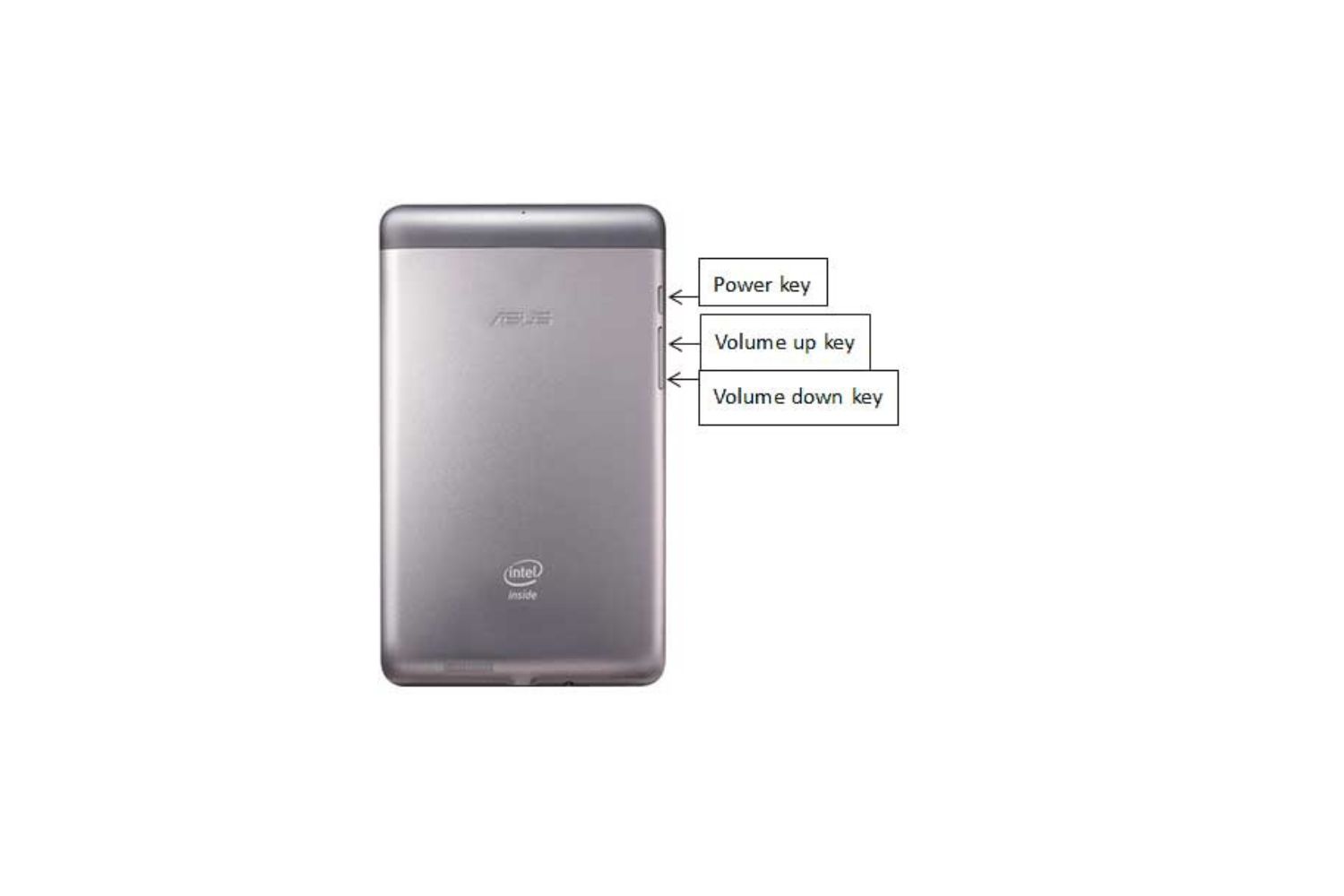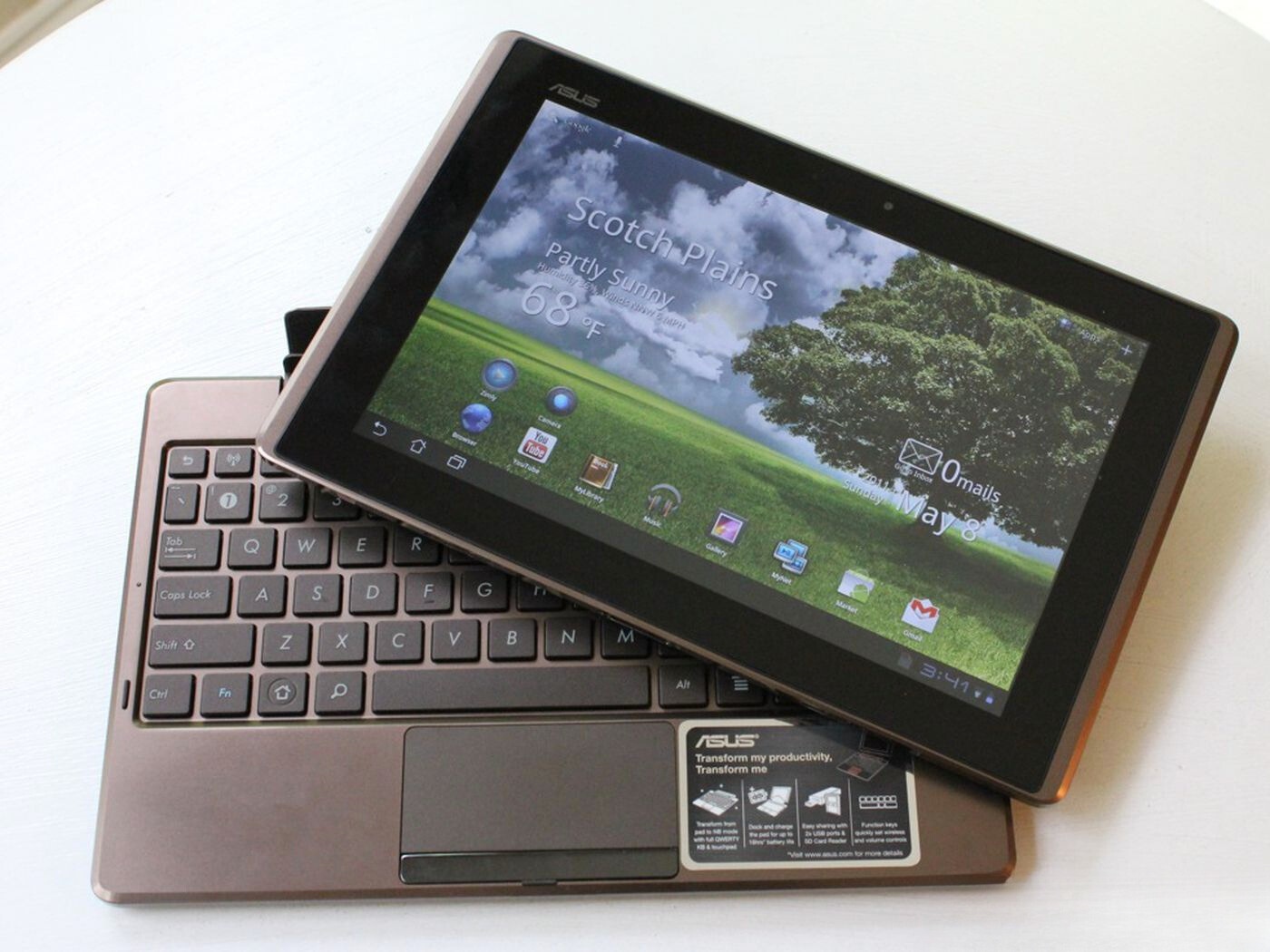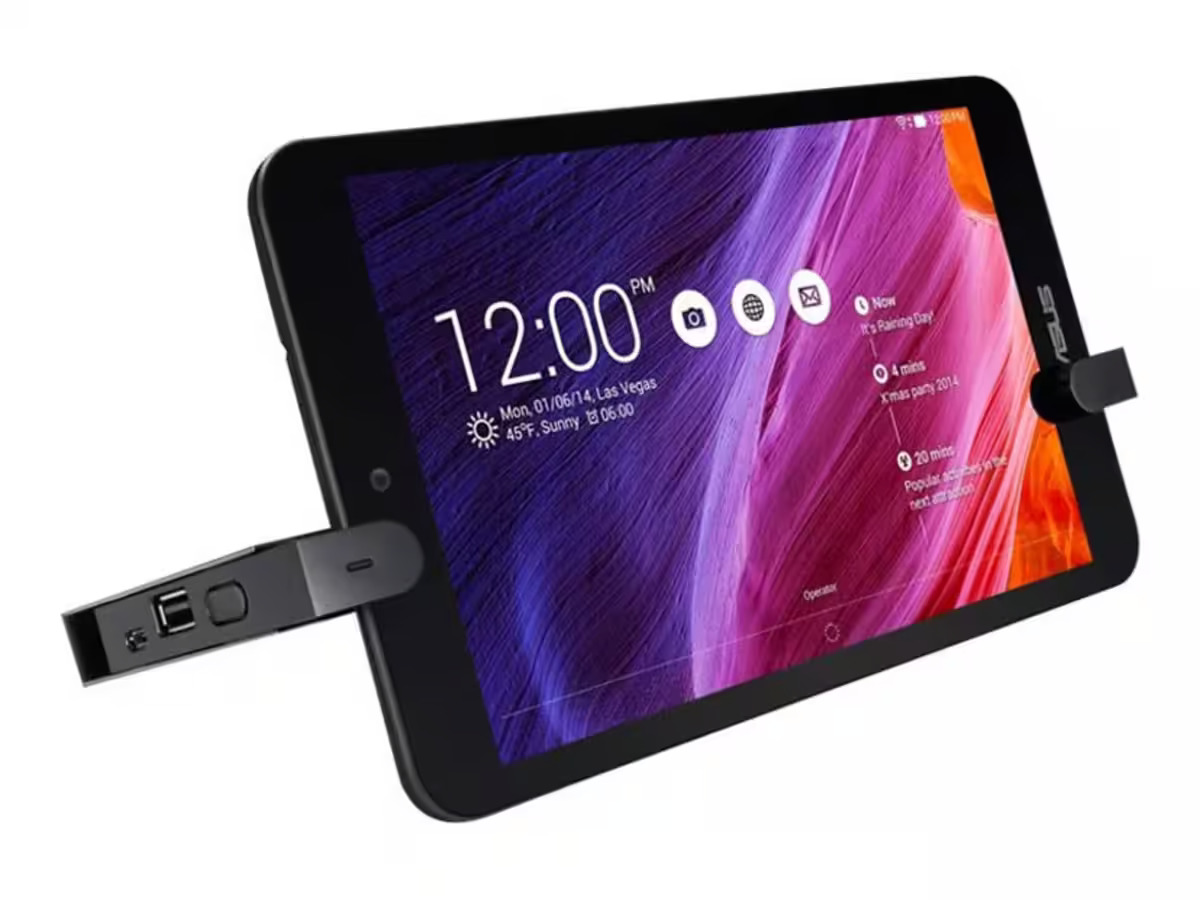Introduction
Welcome to this guide on how to reset your Asus tablet. Your tablet is a valuable tool that you use every day, whether for work, entertainment, or staying connected with friends and family. However, there may come a time when you encounter issues such as freezing, slow performance, or unresponsive apps. In such situations, resetting your tablet can often resolve these problems and restore its functionality.
Resetting your Asus tablet can be done through a soft reset or a factory reset. In this article, we will guide you through the process of both methods, so you can choose the most appropriate option based on the severity of the issues you are facing. We will also provide essential tips for backing up your data and troubleshooting common problems that may arise during the reset process.
It is important to note that performing a reset will erase all data and settings on your tablet. Therefore, it is crucial to back up any important files, photos, and apps before proceeding. This will ensure that you can easily restore your data once the reset is complete.
Whether you are experiencing frequent crashes, app malfunctions, or simply want to start fresh with a clean slate, our step-by-step instructions will help you navigate through the reset process smoothly and efficiently. Let’s dive in and explore how to reset your Asus tablet!
Part 1: Why You Might Need to Reset Your Asus Tablet
There are several reasons why you might need to reset your Asus tablet. Over time, your device can accumulate temporary files, cache, and unnecessary data that can lead to sluggish performance or random glitches. Resetting your tablet can help resolve these issues and optimize its performance. Here are some common situations where a reset might be necessary:
- Unresponsive or Frozen Device: If your tablet becomes unresponsive or freezes frequently, performing a reset can help unlock it from its frozen state and get it functioning normally again.
- Slow Performance: If your tablet has been noticeably slower than usual, a reset can help clear out background processes and free up memory. This can significantly improve its speed and responsiveness.
- App Issues: Sometimes, certain apps may crash or behave unpredictably, causing inconvenience or frustration. Resetting your tablet can eliminate any software conflicts or corrupted app data, allowing the apps to run smoothly again.
- Network Connectivity Problems: If you experience persistent Wi-Fi connectivity issues, such as frequent disconnections or the inability to connect to certain networks, a reset might help resolve these network-related glitches.
- Software Updates: When you install a new software update on your tablet, there might be compatibility issues with existing apps or system settings. Resetting your device can help adjust to new software changes and improve overall stability.
It’s important to note that resetting your Asus tablet should be considered as a last resort after trying other troubleshooting methods. Before proceeding with a reset, you should attempt to resolve issues by clearing app cache, closing unnecessary background apps, and restarting your device. If the problem persists, a reset can often provide a more comprehensive solution.
Now that you understand the reasons why a reset might be necessary, let’s move on to the next section and learn how to back up your data before proceeding with the reset process.
Part 2: Backup Your Data
Before performing a reset on your Asus tablet, it is crucial to back up your important data to prevent any loss of information. Resetting your tablet will erase all data and settings, so taking the time to create a backup will ensure that you can easily restore your files and settings after the reset. Here are a few methods you can use to back up your data:
- Cloud Storage: One of the easiest ways to back up your data is by using cloud storage services such as Google Drive, Dropbox, or OneDrive. These services allow you to upload your files, photos, and documents to the cloud, where they can be accessed and restored later. Make sure to sync your important files to the cloud before proceeding with the reset.
- External Storage: Another option is to use an external storage device such as a USB flash drive or an external hard drive to back up your data. Connect the device to your tablet and transfer your important files and documents to the external storage. Once the reset is complete, you can easily transfer the data back to your tablet.
- Syncing with a Computer: If you have a computer or laptop, you can connect your Asus tablet to it using a USB cable and transfer your files to the computer. Ensure that you have enough free space on your computer’s hard drive to accommodate the data you wish to back up. Once the reset is done, you can transfer the files back to your tablet.
- Backup Apps: Apart from your files and documents, it is also important to back up your apps and their associated data. Some apps offer built-in backup options that allow you to save app data to the cloud or your Google account. Make sure to enable app data backup for your important applications so that you can restore them easily after the reset.
- Contacts and Calendars: If you use your Asus tablet for managing contacts and calendars, make sure to sync this data with your Google account or any other supported account. This will ensure that your important contacts and events are saved and can be retrieved after the reset.
Once you have successfully backed up all your important data, you can proceed with confidence to perform a reset on your Asus tablet. In the next section, we will explore the process of performing a soft reset to troubleshoot minor issues with your device.
Part 3: Soft Reset
A soft reset, also known as a restart, is a simple and effective way to troubleshoot minor issues with your Asus tablet. It involves restarting the device to clear out temporary files, close background processes, and refresh the system. Performing a soft reset can often fix problems like freezing, slow performance, and unresponsive apps. Here’s how you can perform a soft reset on your Asus tablet:
- Press the Power Button: Locate the power button on your tablet, usually located on the side or top of the device. Press and hold the power button until a menu appears on the screen. This menu may vary depending on your tablet model.
- Restart or Reboot: From the menu, look for options such as “Restart” or “Reboot.” Select the appropriate option to initiate the soft reset process.
- Wait for the Tablet to Restart: Your Asus tablet will now begin the restart process. Wait for a few seconds or minutes until the tablet completely shuts down and powers back on.
- Check for Improvement: Once the tablet has restarted, check if the issues you were experiencing have been resolved. Test the performance, launch applications, and ensure that everything is functioning smoothly.
- Repeat if Necessary: If the problems persist after the initial soft reset, you can try performing the process again. Sometimes, multiple restarts may be needed to fix persistent issues.
Performing a soft reset is a quick and easy troubleshooting step that can often resolve minor issues with your Asus tablet. However, if you are still experiencing significant problems or if the issues recur frequently, you may need to perform a factory reset. We will discuss the factory reset process in the next section.
Part 4: Factory Reset
A factory reset is a more thorough method of resetting your Asus tablet. It restores the device to its original factory settings, removing all data, apps, and settings from the device. Performing a factory reset can be useful in situations where a soft reset or other troubleshooting methods have failed to resolve the issues you are facing. However, it is important to note that a factory reset will erase all your data, so it is crucial to back up your important files before proceeding. Here’s how you can perform a factory reset on your Asus tablet:
- Backup Your Data: Ensure that you have backed up all your important data using one of the methods mentioned in Part 2 of this guide. This will ensure that you can restore your files and settings after the factory reset.
- Access the Settings Menu: On your Asus tablet, go to the Settings menu. You can usually find this by swiping down from the top of the screen and tapping on the settings icon, which resembles a gear.
- Select System: In the Settings menu, scroll down and locate the “System” option. Tap on it to access the system settings.
- Choose Reset Options: In the System settings, look for the “Reset” or “Reset options” section. Tap on it to view the available reset options.
- Select Factory Data Reset: From the reset options, select the “Factory data reset” or similar option. You may be prompted to enter your device’s PIN or password to proceed.
- Confirm the Reset: A warning message will appear, informing you that all data will be erased. Read the message carefully, and if you’re sure you want to proceed, tap on “Reset” or “Erase all content” to confirm.
- Wait for the Reset: Your Asus tablet will now begin the factory reset process. This may take a few minutes to complete. Make sure that your tablet is connected to a power source to avoid any interruptions during the reset process.
- Set Up Your Tablet: Once the reset is complete, your Asus tablet will restart and display the initial setup screen. Follow the on-screen instructions to set up your tablet, including selecting your language, connecting to Wi-Fi, and signing in with your Google account.
Performing a factory reset will wipe your tablet clean and restore it to its original state. This can be beneficial if you are experiencing major issues or want to start fresh with a clean device. However, remember to reinstall your apps, restore your backed-up data, and reconfigure your settings after the reset to get your tablet back to the way you like it.
Part 5: Troubleshooting Tips
In certain cases, you may still encounter issues with your Asus tablet even after performing a soft reset or factory reset. Before seeking professional help or considering other solutions, here are some troubleshooting tips that can help you tackle these problems:
- Check for Software Updates: Ensure that your tablet’s operating system and apps are up to date. Software updates often include bug fixes and performance improvements that can resolve issues you may be experiencing.
- Clear App Cache: Apps can accumulate temporary files and data over time, which can slow down performance. Clearing the app cache can help improve speed and resolve issues. Go to Settings > Apps > [App Name] > Storage > Clear Cache.
- Disable Unused Apps: Unused apps running in the background can consume system resources and affect performance. Disable or uninstall apps that you no longer use to free up memory and improve performance.
- Check for Malware: Malware or viruses can cause various issues on your tablet. Install a reputable antivirus app and perform a full system scan to detect and remove any malicious software.
- Reset Network Settings: If you are experiencing Wi-Fi connectivity issues, resetting the network settings might help. Go to Settings > System > Reset options > Reset Wi-Fi, mobile & Bluetooth.
- Perform a Hard Reset: If all else fails, a hard reset can be attempted as a last resort. This involves completely powering off the tablet and then turning it back on. Hold the power button and volume down button simultaneously until the device restarts.
- Seek Professional Help: If you have followed all troubleshooting measures and are still experiencing persistent issues, it might be necessary to seek assistance from a professional technician or contact Asus customer support for further guidance.
Remember to approach these troubleshooting tips with caution and only try them if you are comfortable doing so. If you are unsure or feel uncomfortable performing any of the steps, it is always best to seek professional assistance to avoid further complications.
By following these troubleshooting tips, you can potentially resolve common issues and get your Asus tablet back to optimal performance. However, always explore other options and seek expert advice if the problems persist or if you encounter any complex technical issues.
Conclusion
Resetting your Asus tablet can be an effective solution for resolving various issues and restoring its performance and functionality. Whether you opt for a soft reset or a factory reset, it is essential to back up your data beforehand to prevent any loss of information. Soft resets are ideal for troubleshooting minor issues, while factory resets are more comprehensive and should be considered if other troubleshooting methods have failed.
Throughout this guide, we have discussed the importance of backing up your data, provided step-by-step instructions for performing a soft reset and factory reset, and offered troubleshooting tips for tackling persistent issues. By following these guidelines, you can confidently navigate the reset process and address common problems that may arise with your Asus tablet.
Remember to approach the reset process with caution, as it will erase all data and settings on your device. Take the time to back up your important files and data using cloud storage, external storage devices, or computer syncing options. This will ensure that you can easily restore your data and settings after the reset is complete.
If you encounter any challenges or your tablet’s issues persist even after performing a reset, consider seeking professional help or contacting Asus customer support for further assistance. These experts can provide personalized guidance and solutions based on your specific situation.
With the knowledge and information gained from this guide, you are now equipped to confidently reset your Asus tablet and troubleshoot common issues that may arise. Enjoy a fresh start with your tablet and the improved performance it can provide!

























